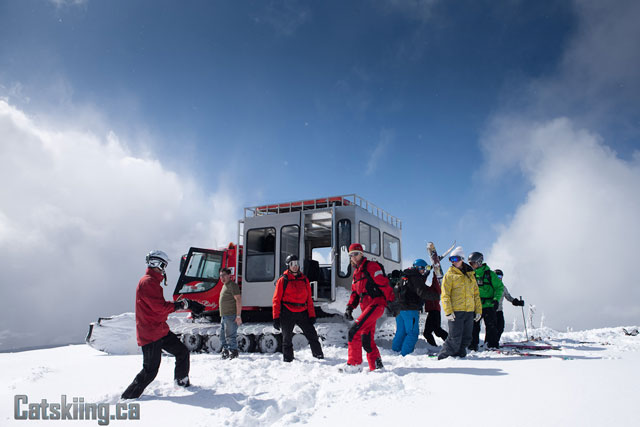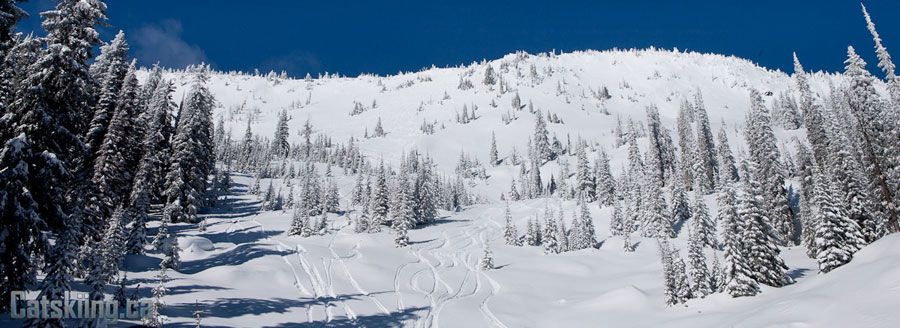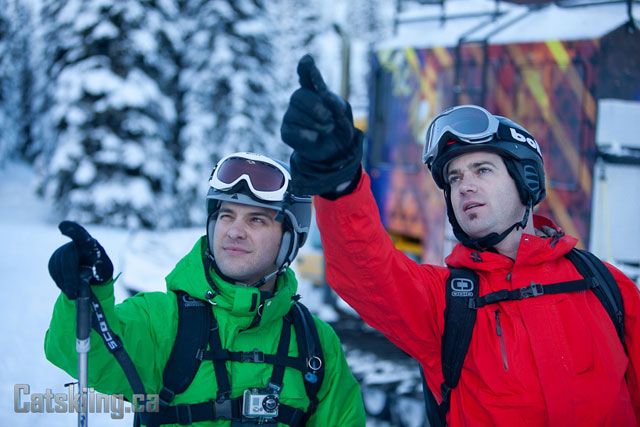WHAT IS CATSKIING?
The concept of cat skiing began over 30 years ago at Selkirk Wilderness, which is located near Meadow Creek, British Columbia, Canada. Brenda and Alan Drury had an epiphany while on a ski holiday and realized that the ski hill grooming machines would make an excellent logistical tool for accessing the backcountry – provided there is a network of snow roads which can be used all winter long. Since then the sport has grown and expanded year after year. In the last 10 years this growth has accelerated, with the capacity increasing three-fold.

Cat skiing now comes in two forms: day skiing operations – usually located near a town; and remote, multi-day operations based out of a wilderness lodge. A cat-skiing / cat-boarding holiday begins with a safety talk and avalanche transceiver practice session with the guides. On subsequent days the skiing begins immediately following breakfast. The first drop-off of the day is usually near the lodge. The guides then work their way to the far parts of the ski area through the morning –and back to the lodge through the afternoon. At some operations (for example; Mustang Powder) you can ski right down to the lodge on the last run of the day. In order to maximize the amount of skiing each day, progressive cat operations strive to make their snow road systems as efficient as possible. Rarely does one ski multiple times on the same run – since a ski day with variety is usually the most interesting.


The passenger cabs on the snowcats are heated, comfortable and fairly quiet. Cat skiers often comment that they really enjoy the social aspect of the snowcat rides. At the top of the ascent everyone disembarks and helps unload the ski gear – so that the cat can leave promptly and be down at the bottom of the run when the skiers arrive. Most operations have a spare snowcat, so in the event of a mechanical breakdown the ski program can continue.
Also check out how Wikipedia describes Snowcat Skiing.